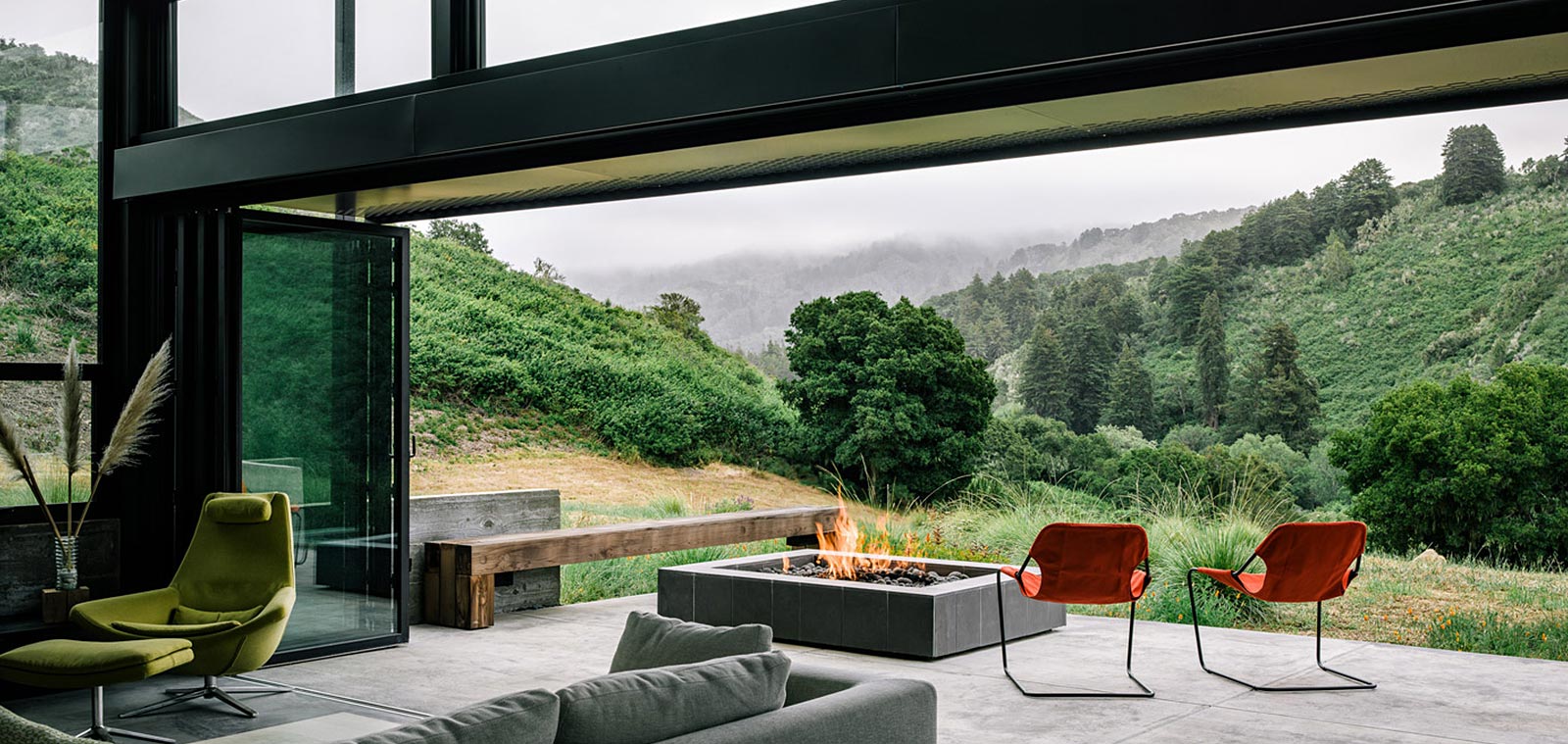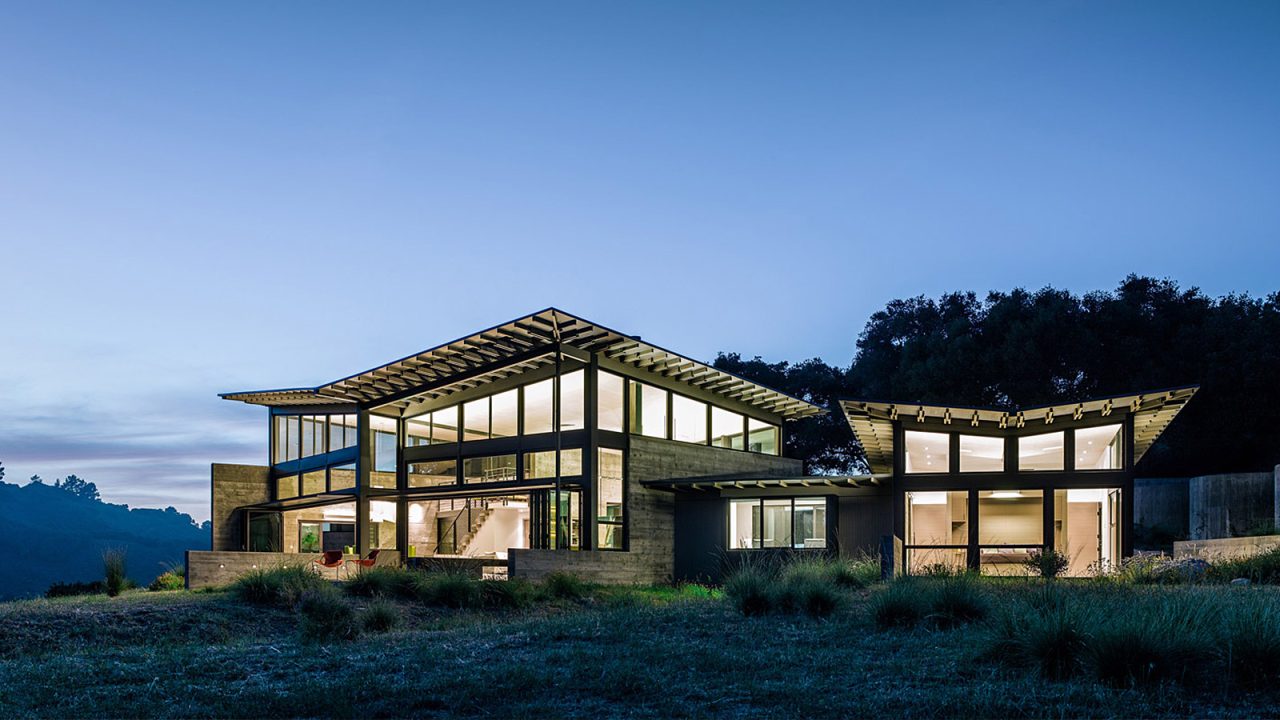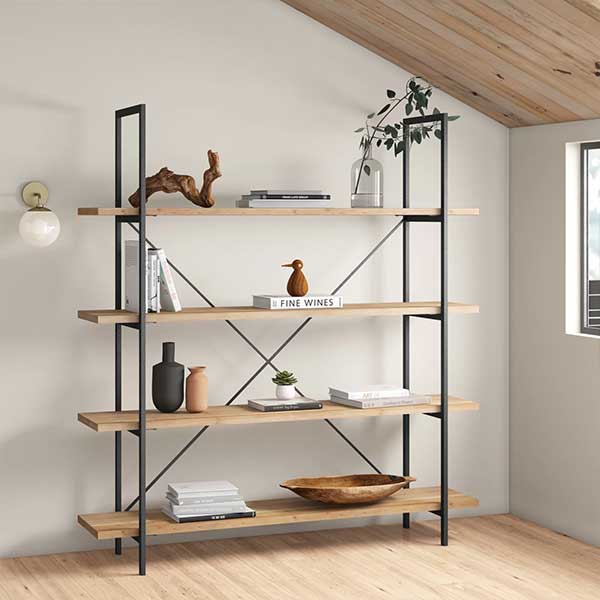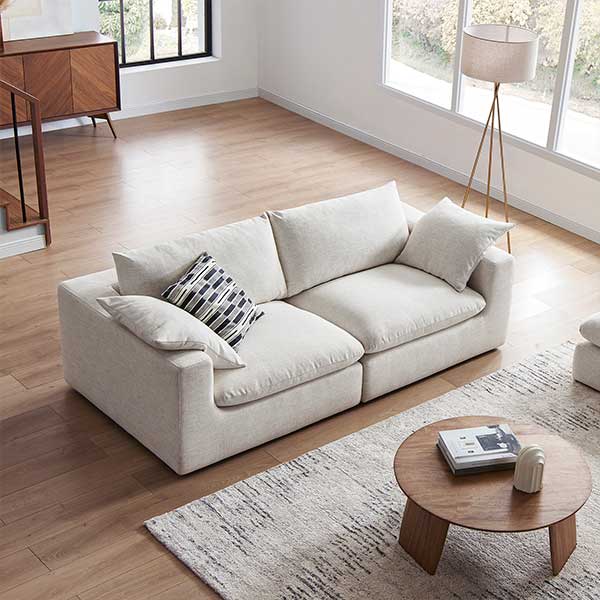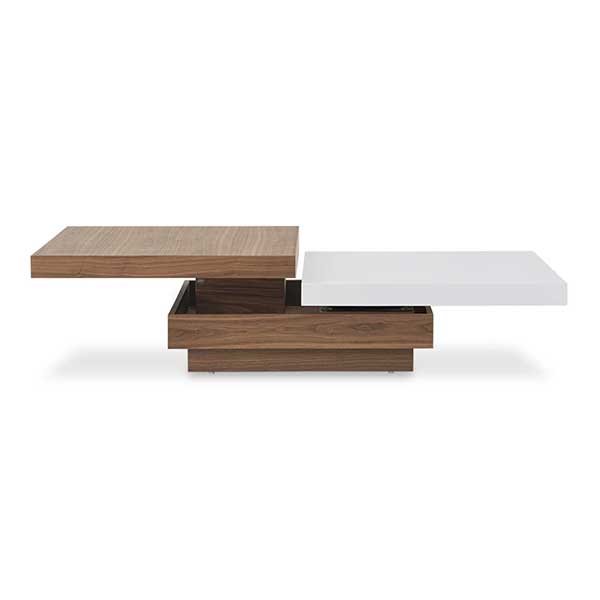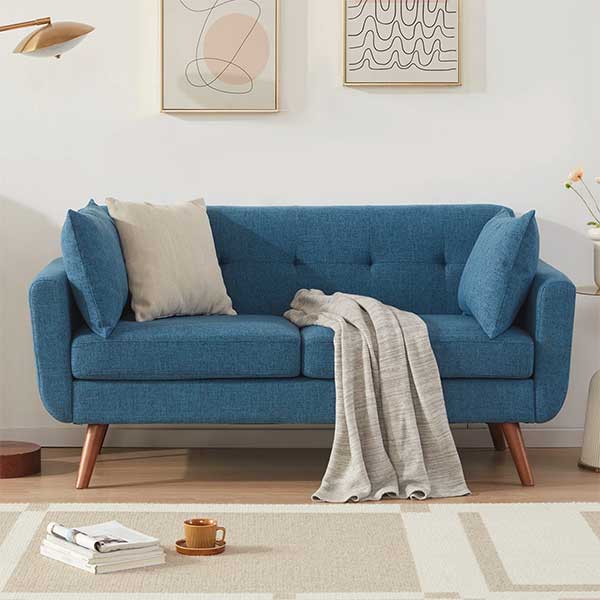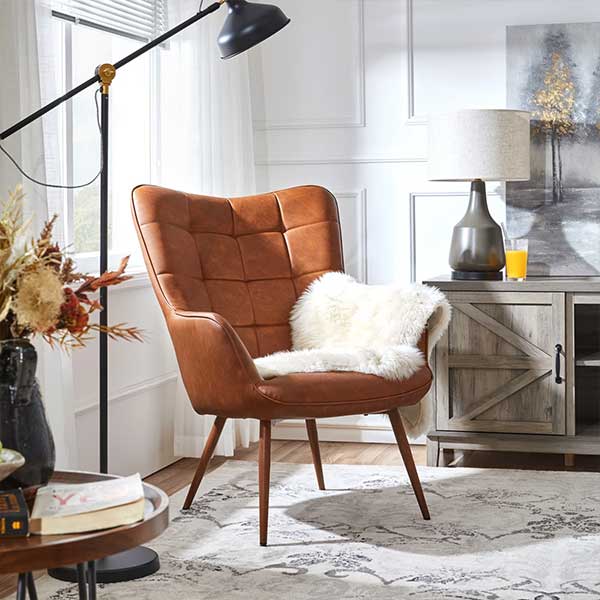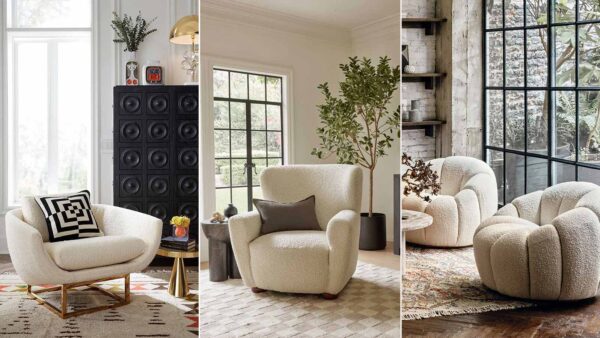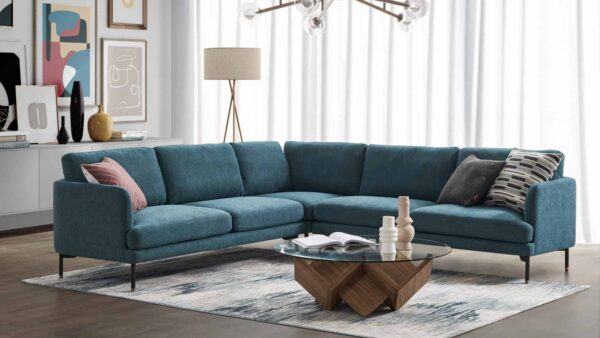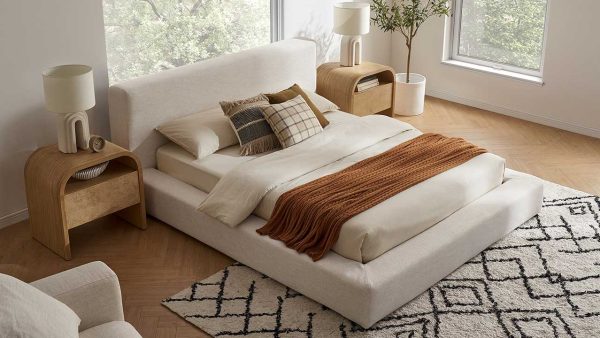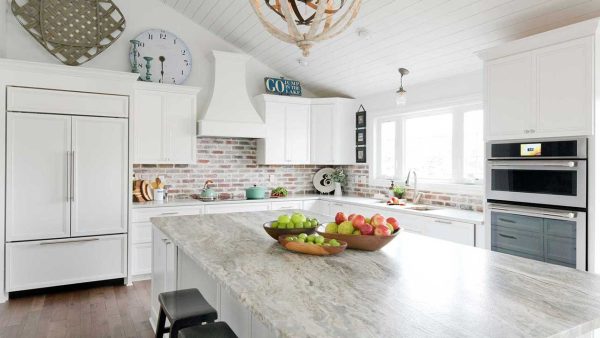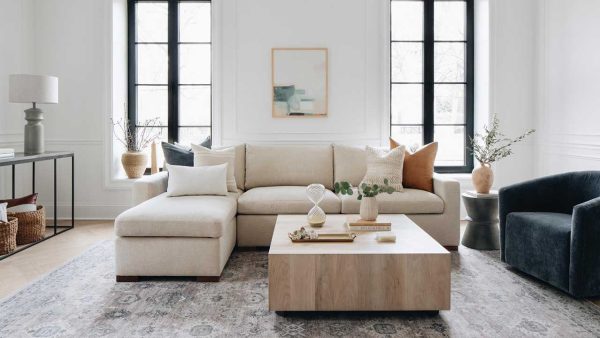A contemporary low-energy house that's at one with nature
The clients approached Feldman Architecture to design a retreat for eventual retirement and visits from their grown children. The retreat had to take advantage of the natural beauty of the location in the Santa Lucia Preserve, a 20,000 acre private development and land trust near Carmel, California.
After a meticulous two year search for a site, the clients settled for a spectacular piece of land which was flat enough to accommodate living on one level. In an initial meeting with Feldman Architecture, the clients noted their vision of butterflies descending on the meadow site which the architects took as inspiration.
The clients also expressed a desire to integrate indoor and outdoor spaces with a simple, modern aesthetic and to provide separate spaces for the growing family.
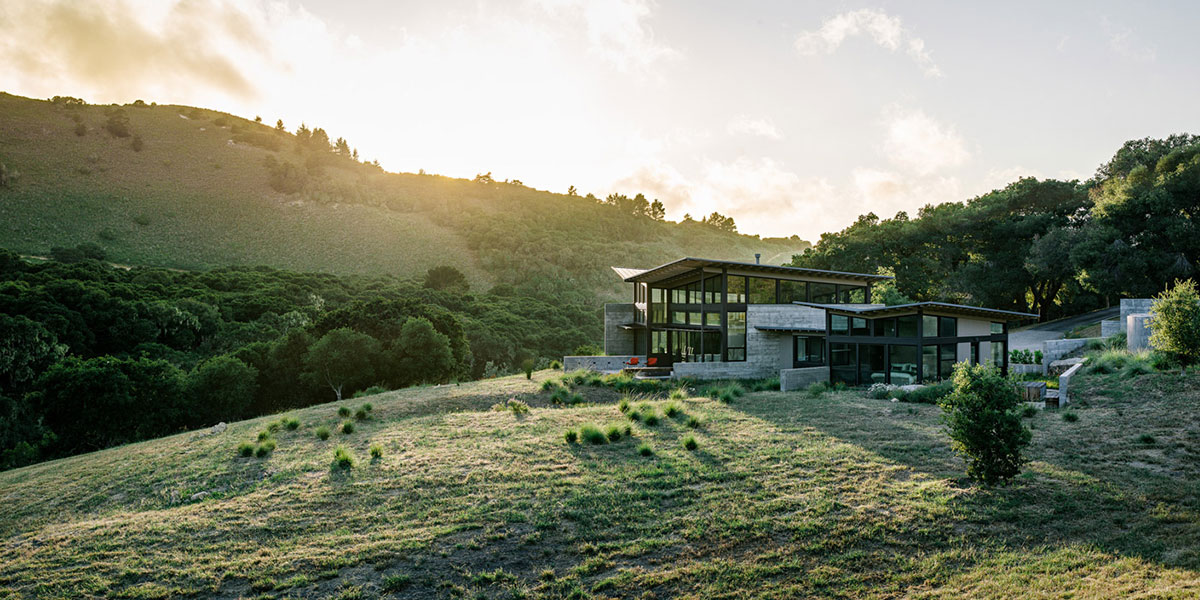
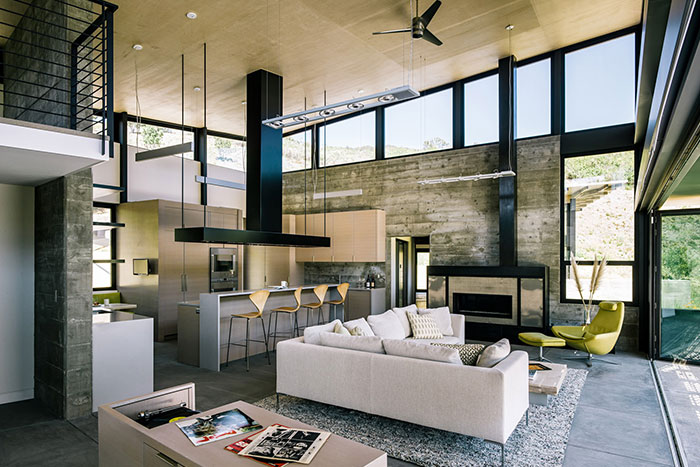
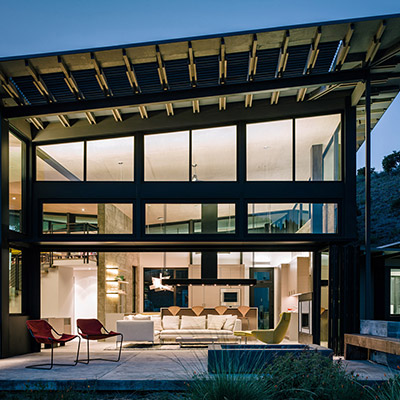
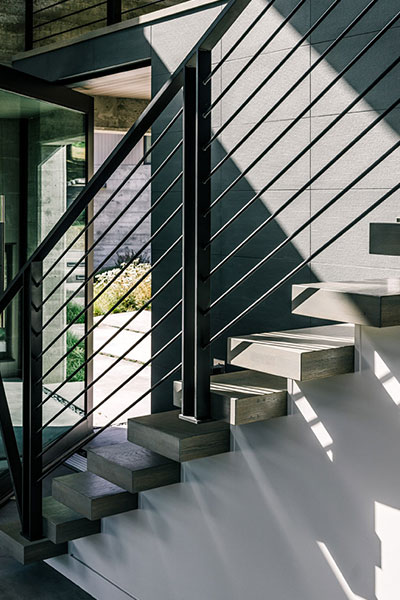
The contemporary home is divided into three smaller pavilions which are capped by expressive, butterfly roofs. Each pavilion has a separate function: the central pavilion houses the main living, dining, and cooking spaces, while the other two pavilions are used for sleeping, bathing, and relaxing.
The structures are modest in square footage, yet each expands into an outdoor room that opens up to stunning views of the canyon below and hills beyond.
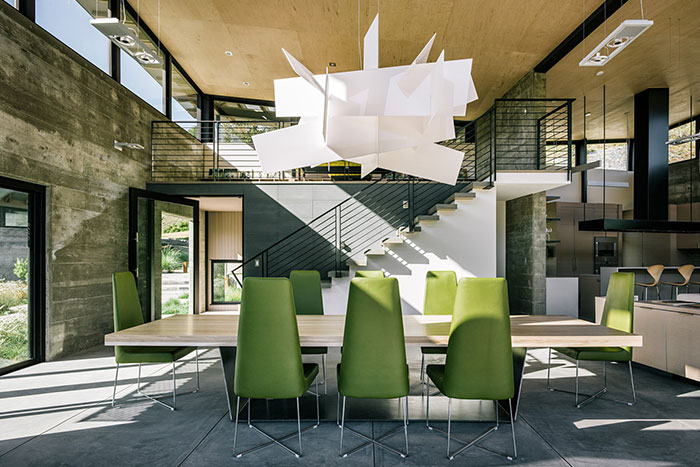
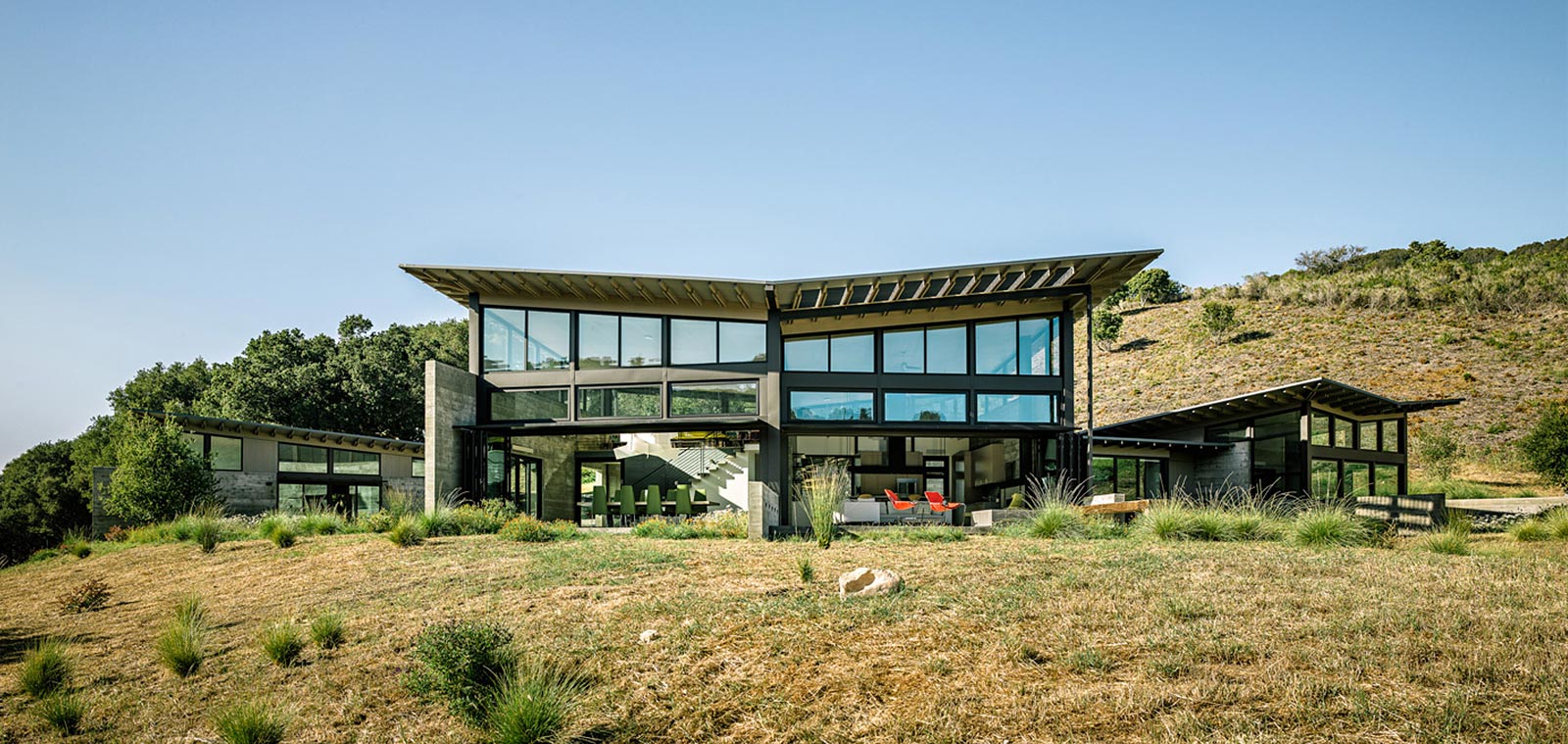
The butterfly roofs serve several functions beside aesthetics. They offer spectacular views of the surrounding hills, expand the main living spaces into the outdoors and also harvest rainwater. Water, an increasingly limited resource especially in California, is celebrated throughout the contemporary design.
Each roof funnels water to a rain chain fountain and into landscape collection pools, which then gather in cisterns where it is stored and used to irrigate the landscape. In addition, the pavilions allow water to flow under the office bridge during the rainy season and for storm water to seep slowly into the ground in the main courtyard.
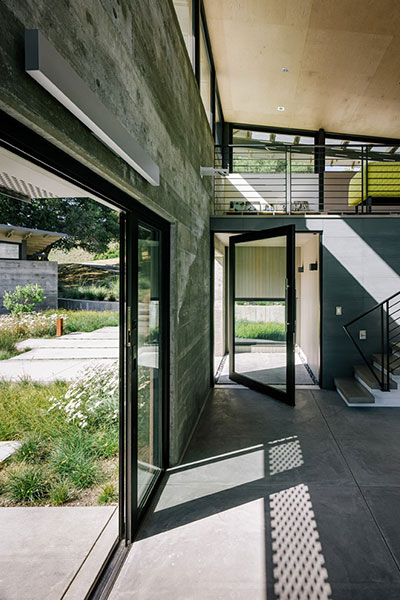
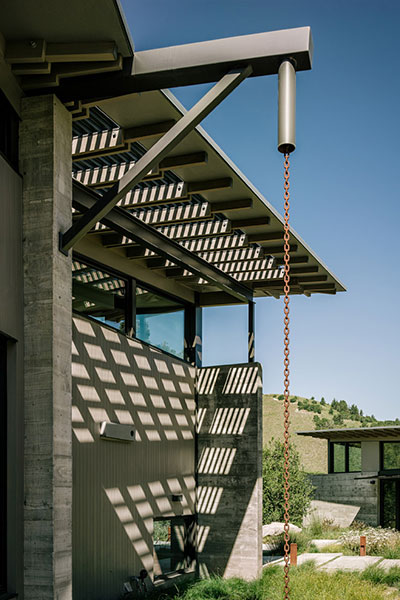
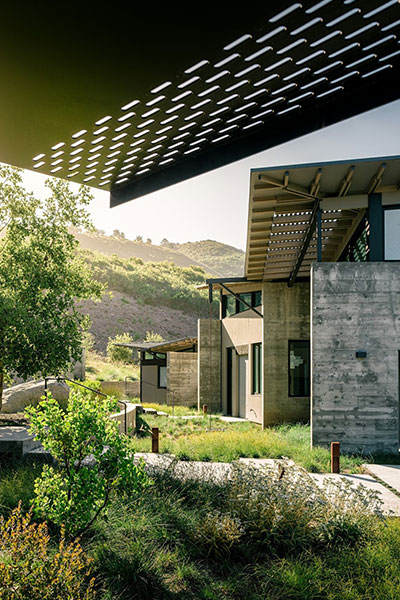
To further enhance the indoor-outdoor living sensation, a neutral palette was chosen for the materials: concrete for the floors and walls, large pieces of glass for the openings, plywood for ceilings and steel for structures. The use of concrete and large expanses on glass openings acts as a heat sink – absorbing heat from the sunlight all day and releasing that heat at night.
Besides saving precious water through its spectacular roofs and heat through carefully chosen materials, this contemporary house manages to have a low-energy consumption. A solar array, located out-of-sight, provides about half of the home's energy needs, that have been greatly reduced by maximizing the amount of natural light all the spaces receive throughout the day.
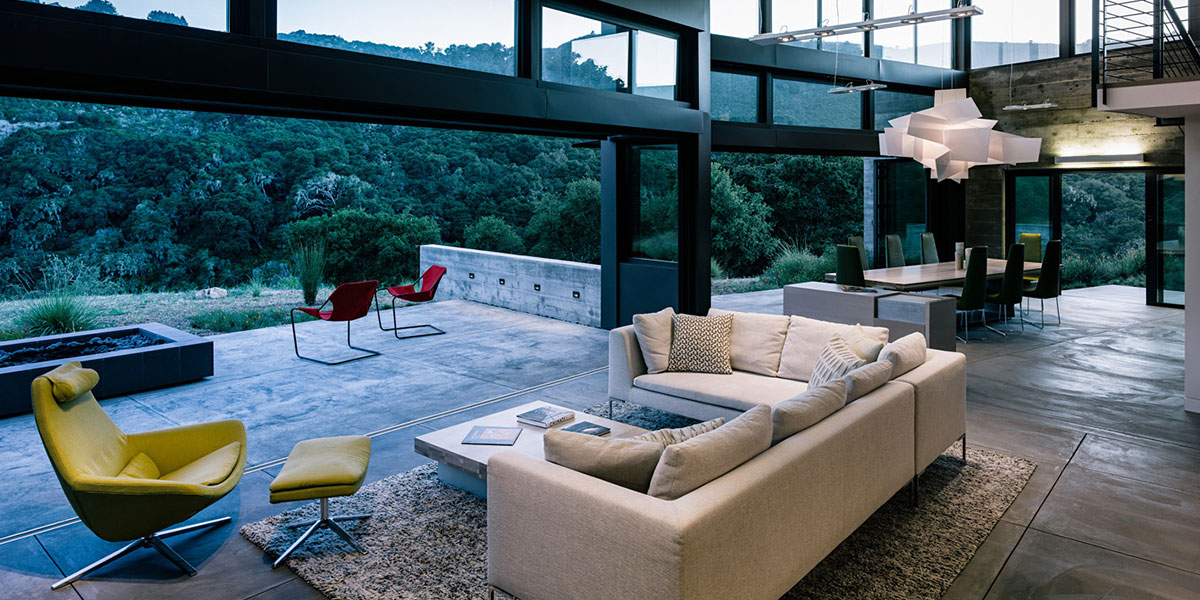
Butterfly House's link to nature is obvious when viewing the butterfly inspired aesthetics, the connection to the Californian landscape through indoor-outdoor spaces, rainwater harvesting roofs and low-energy consumption.
Photography by: Joe Fletcher
